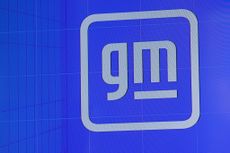Job-Hunting Tips for Midlife Career Changers
If you've been out of the job market for a while, here's how to jump-start your search.

Changing careers is daunting, especially if you haven’t applied for a job since social media burst onto the scene. But even though age discrimination is real, it’s not as pervasive as some older workers believe, says Mary Eileen Williams, a career counselor and author of Land the Job You Love: 10 Surefire Strategies for Jobseekers Over 50. Williams says the key to overcoming stereotypes about older workers is to get your foot in the door through a personal referral. That will also help your résumé stand out from the thousands of responses employers receive for job postings. When it comes to finding a job, Williams says, “it’s still who you know—I don’t care how big the Internet is.”
That doesn’t mean you should ignore the Web and social media. You should have a profile on LinkedIn that showcases your skills, and you can also read job postings on LinkedIn to identify the types of skills potential employers are seeking.
In addition, LinkedIn job listings can help you determine whether you need to learn new skills to remain competitive. If so, Khan Academy, a nonprofit Web site, offers free video tutorials on everything from statistics to computer programming. GCFLearnFree, sponsored by Goodwill Industries, also offers free online tutorials on computer basics, such as Microsoft Excel.

Sign up for Kiplinger’s Free E-Newsletters
Profit and prosper with the best of expert advice on investing, taxes, retirement, personal finance and more - straight to your e-mail.
Profit and prosper with the best of expert advice - straight to your e-mail.
You’ve probably compiled a lengthy résumé, and it’s important to manage it strategically. Resist the temptation to e-mail dozens of résumés before breakfast every day. Instead, create a template and customize it to suit the job you’re applying for. “It’s better to send out two customized résumés a week than 5,000 that are boilerplate,” says Williams.
Don’t include your entire work history on your résumé. Most employers are only interested in what you’ve done for the past ten to 15 years, Williams says. She recommends including a section titled “Ongoing Professional Development” that details online or college courses you’ve taken to keep your skills up-to-date.
Finally, when you’re talking to potential employers, focus on areas where your age is an asset, not a liability. Have you pacified a disgruntled client or customer? Worked with someone who had a difficult personality? “All employers want problem solvers,” Williams says. “When you’ve reached midlife and beyond, you’ve solved a ton of problems.”

To continue reading this article
please register for free
This is different from signing in to your print subscription
Why am I seeing this? Find out more here

Block joined Kiplinger in June 2012 from USA Today, where she was a reporter and personal finance columnist for more than 15 years. Prior to that, she worked for the Akron Beacon-Journal and Dow Jones Newswires. In 1993, she was a Knight-Bagehot fellow in economics and business journalism at the Columbia University Graduate School of Journalism. She has a BA in communications from Bethany College in Bethany, W.Va.
-
 Stock Market Today: Nasdaq Soars Ahead of Tesla Earnings
Stock Market Today: Nasdaq Soars Ahead of Tesla EarningsThe EV stock rose nearly 2% ahead of its highly anticipated Q1 earnings report, due after tonight's close.
By Karee Venema Published
-
 GM Stock Accelerates After Earnings Beat
GM Stock Accelerates After Earnings BeatGeneral Motors beat expectations for the first quarter and raised its outlook for the year. Here's what you need to know.
By Joey Solitro Published
-
 403(b) Contribution Limits for 2024
403(b) Contribution Limits for 2024retirement plans Teachers and nonprofit workers can contribute more to a 403(b) retirement plan in 2024 than they could in 2023.
By Jackie Stewart Published
-
 Roth IRA Contribution Limits for 2024
Roth IRA Contribution Limits for 2024Roth IRAs Roth IRA contribution limits have gone up for 2024. Here's what you need to know.
By Jackie Stewart Published
-
 Best Foreclosure Sites for Finding Properties
Best Foreclosure Sites for Finding PropertiesMaking Your Money Last Wondering how to find foreclosed homes for sale for your next residence or to flip for a profit? These websites will guide you to foreclosures and real estate-owned properties to buy.
By Bob Niedt Last updated
-
 Four Tips for Renting Out Your Home on Airbnb
Four Tips for Renting Out Your Home on Airbnbreal estate Here's what you should know before listing your home on Airbnb.
By Miriam Cross Published
-
 Five Ways to a Cheap Last-Minute Vacation
Five Ways to a Cheap Last-Minute VacationTravel It is possible to pull off a cheap last-minute vacation. Here are some tips to make it happen.
By Vaishali Varu Last updated
-
 How Much Life Insurance Do You Need?
How Much Life Insurance Do You Need?insurance Instead of relying on rules of thumb, you’re better off taking a systematic approach to figuring your life-insurance needs.
By Kimberly Lankford Published
-
 When Is Amazon Prime Day?
When Is Amazon Prime Day?Amazon Prime In 2023 Amazon had two Prime Day events — one in July and another, called Big Deal Days, in October. We expect 2024 to follow the same schedule.
By Bob Niedt Last updated
-
 How to Shop for Life Insurance in 3 Easy Steps
How to Shop for Life Insurance in 3 Easy Stepsinsurance Shopping for life insurance? You may be able to estimate how much you need online, but that's just the start of your search.
By Kaitlin Pitsker Published